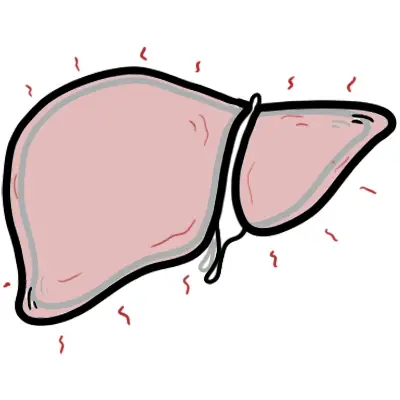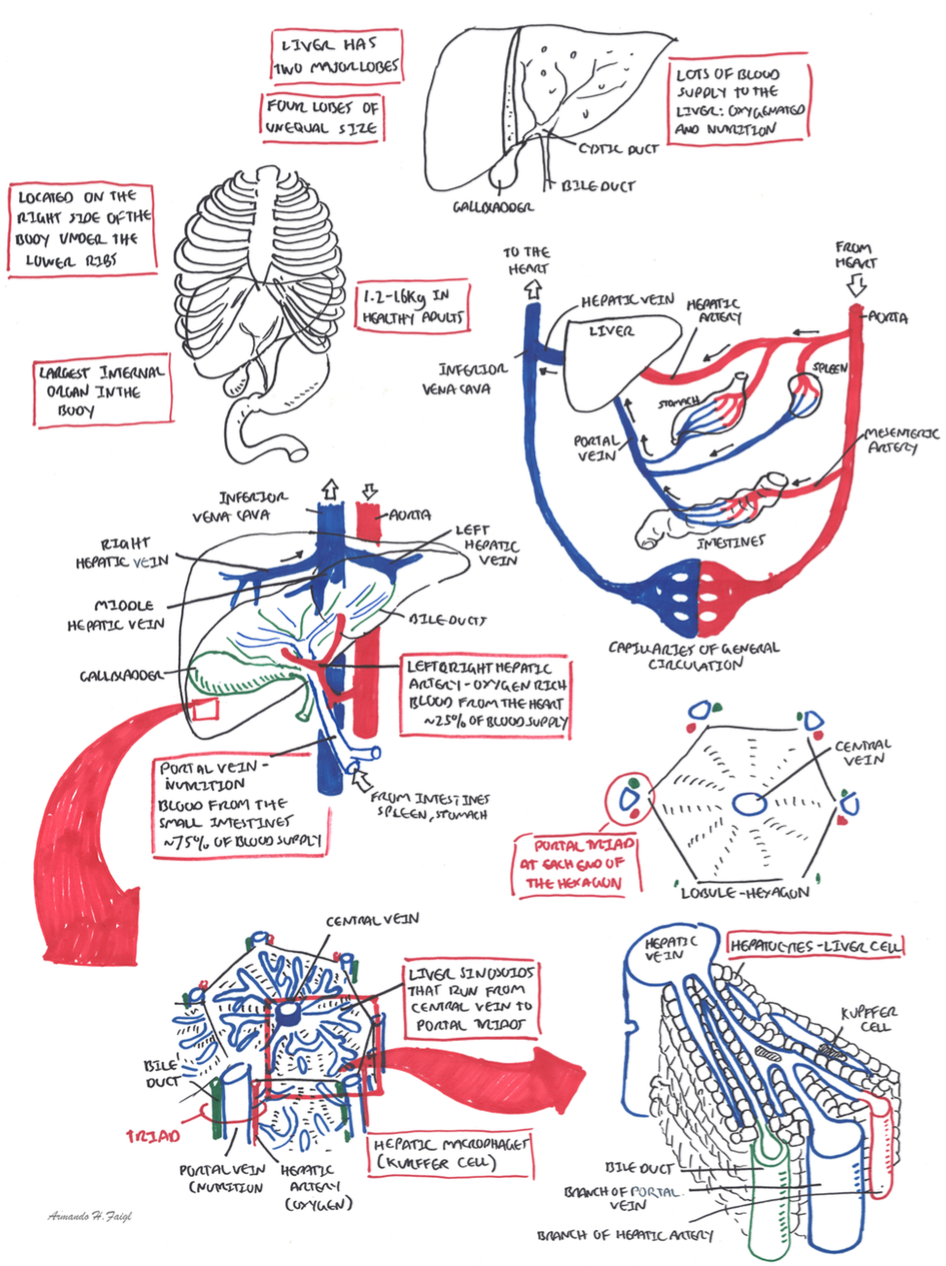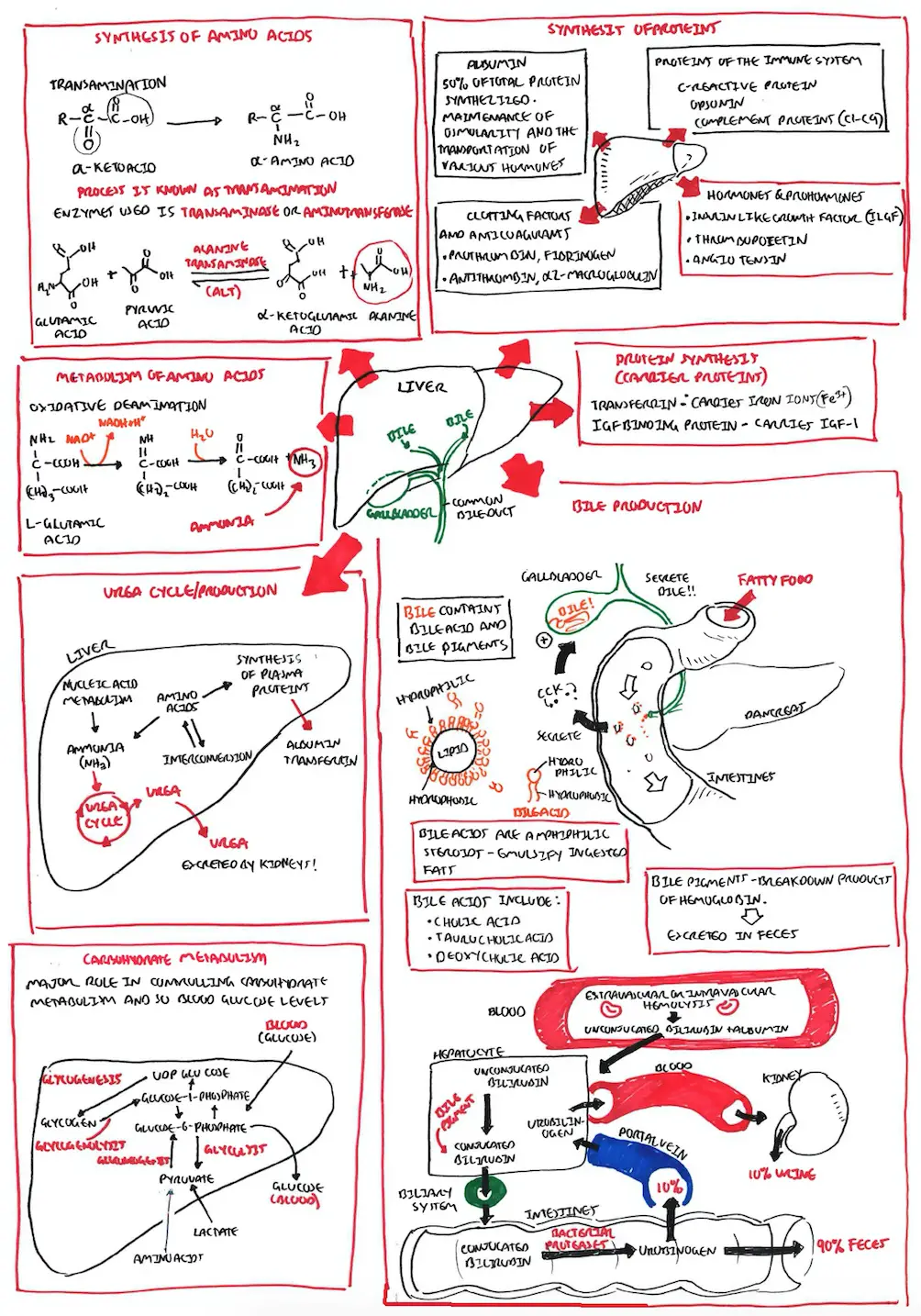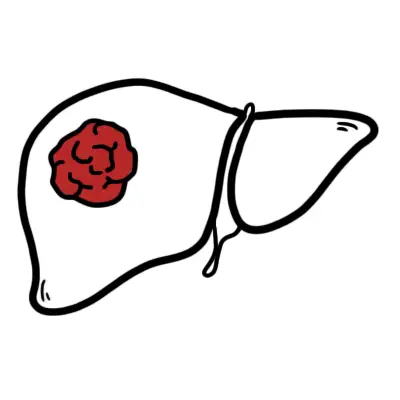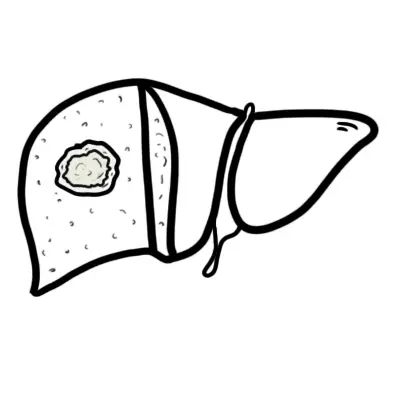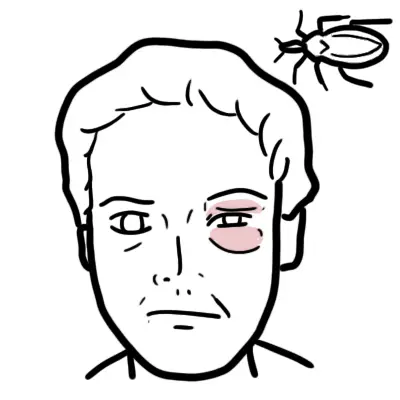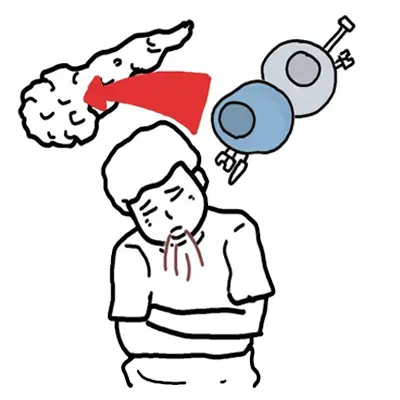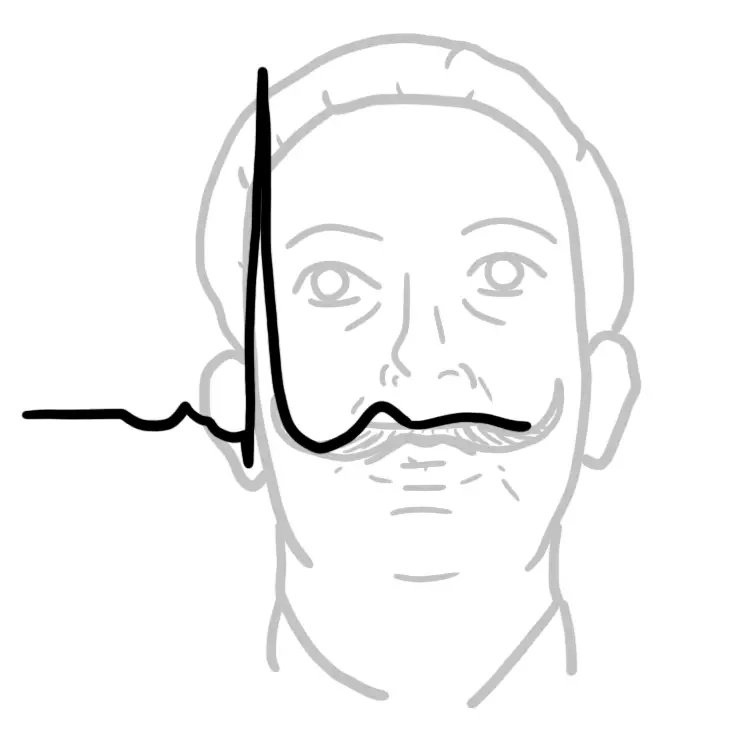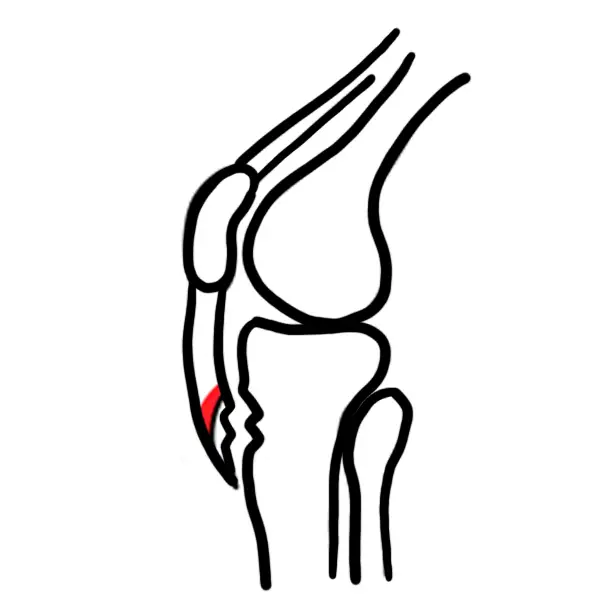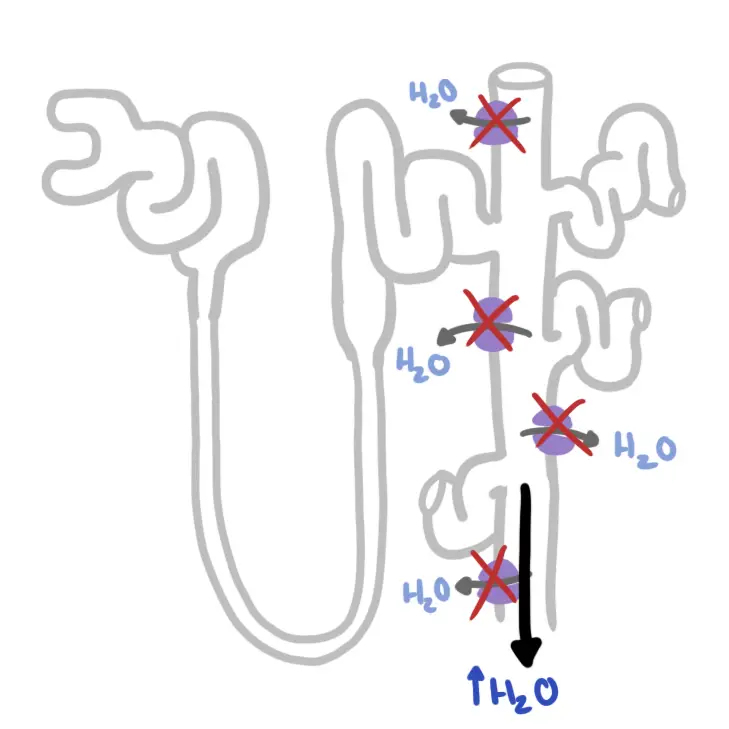Overview
Overview Acute liver failure is a rare but life-threatening critical illness that occurs most often in patients who do not have preexisting liver disease. Acute liver failure is seen most commonly in previously healthy adults in their 30s and presents unique challenges in clinical management. The clinical presentation usually includes hepatic dysfunction, abnormal liver biochemical values, and coagulopathy; encephalopathy may develop, with multiorgan failure and death occurring in up to half the cases
| Definition Acute liver failure (ALF): is a rare syndrome defined by a rapid decline in hepatic function characterised by jaundice, coagulopathy (INR >1.5), and hepatic encephalopathy in patients with no evidence of prior liver disease Fatty liver disease: Fat accumulation in the liver as globules. Can be non-alcoholic or alcoholic. Common cause of chronic liver disease and eventually liver cirrhosis Liver Cirrhosis: irreversible damage or scarring to the liver as a result of advanced liver disease (such as hepatitis) that stops the liver functioning, potentially leading to liver failure. |
Risk Factors
- Travelling overseas - hepatitis
- Age
- Cardiorespiratory failure
- Mental illness
Signs and Symptoms
Clinical Presentation of Acute Liver Injury
- Jaundice (defining feature)
- Pruritis
- Symptoms of hepatic encephalopathy (Grading Encephalopathy is Important!)
- Abdominal pain
- Nausea/vomiting
- Malaise
| Remember The presence of jaundice and its relation to the onset of hepatic encephalopathy is important in the assessment of prognosis and further characterisation of ALF |
Clinical Examination of Acute Liver Failure
- Signs of hepatic encephalopathy (Grading is important!)
- Confusion, somnolence, coma
- Hyperreflexia
- Nystagmus
- Asterixis
- Clonus
| Asterix: tremor of the hand when the wrist is extended, sometimes said to resemble a bird flapping its wings. Causes include hepatic encephalopathy, uraemic syndrome (renal failure) and pulmonary insufficiency (↑CO2) |
- Jaundice
- Vesicular skin lesions - herpes simplex virus
- Kayser-Fleisher rings - Wilson disease
- Fever
- Right upper quadrant tenderness and hepatomegaly
- Ascites
- Signs of intravascular volume depletion, such as orthostatic hypotension
- Features of preeclampsia, such as hypertension (HELLP syndrome)
| GRADING SYSTEM FOR HEPATIC ENCEPHALOPATHY | |||
| Grade | Mental status | Asterixis | EEG |
| I | Euphoria/depression | Yes/no | Usually normal |
| Mild confusion | |||
| Slurred speech | |||
| Disordered sleep | |||
| II | Lethargy | Yes | Abnormal |
| Moderate confusion | |||
| III | Marked confusion | Yes | Abnormal |
| Incoherent | |||
| Sleeping but arousable | |||
| IV | Coma | No | Abnormal |
Classification
Acute hepatic failure is defined by a rapid decline in hepatic function characterised by jaundice, coagulopathy (INR >1.5), and hepatic encephalopathy in patients with no evidence of prior liver disease. Therefore:
- First exclude underlying chronic liver disease (ex. cirrhosis). The following signs suggest chronic liver disease or cirrhosis is underlying acute presentation:
- Splenomegaly
- Spider angiomata
- Palmar errythema
- Ascites
| Watch Video Liver Cirrhosis |
| King's Classification | Features |
| Hyperacute liver failure | Encephalopathy within 7 days of onset of jaundice |
| Acute liver failure | 8-28 days from jaundice to encephalopathy |
| Subacute liver failure | 29-72 days from jaundice to encephalopathy |
| Side note Ammnonia levels don't always correlate with severity of encephalopathy |
| Hepatic encephalopathy is a neuropsychiatric disorder in patients with liver dysfunction (personality changes, intellectual impairment, reduced consciousness). This is due to diversion of portal blood into the systemic circulation via collateral resulting in increased about of toxins that are not cleared by the liver. Exposure of the brain to excessive concentrations of ammonia and other toxins can cause neurotoxicity. |
Differential Diagnosis
| Remember Acute liver failure is caused by something. Rule out viral and drug induced causes. Keep in mind the differentials below |
- Severe acute hepatitis
- Cholestasis
Aetiology
Determining the aetiology of acute liver failure requires a combination of history taking, laboratory tests, and imaging studies.
- Paracetamol hepatotoxicity (50% - most common in developed countries)
- Equally divided between intentional and unintentional cases
- Idiosyncratic drug-induced liver injury (11%)
- Viruses - Common in developing countries
- Hepatitis A
- Hepatitis B
- Hepatitis E
- Autoimmune hepatitis
- Ischaemic hepatitis - patients with underlying cardiac/respiratory failure
- Pregnancy related syndrome
- Budd-Chiari syndrome
- Mushroom ingestion - Amanita phalloides
- Wilson's disease
- Malignancy
| Remember Viral and drug-induced hepatitis are the most common causes of acute liver failure in adults |
| DRUGS ASSOCIATED WITH LIVER INJURY | |
| Drug Class | Examples |
| Herbal and dietary supplements | Body building and weight loss supplements, Chinese herbs and many more... |
| Antimicrobial | Many... |
| Analgesics | NSAIDs, paracetamol |
| Antiepileptic drugs | carbamazepine, lamotrigine, phenytoin, valproate |
| Illicit drugs | MDMA, cocaine |
| Immunomodulatory drugs | Azathioprine, TNF-α inhibitors, methotrexate, interferon-beta |
| Antineoplastic drugs | Flutamide, ipilimumab |
| Antiretroviral drugs | Ritonavir, efavirenz |
| Cardiovascular drugsdrugs | Amiodarone, methyldopa |
| Psychotropic drugs | Duloxetine, chlorpromazine |
Investigations
Bedside
- ECG
- Blood glucose - may be dangerous low
Serology
- LFT - Often elevated levels of aspartate aminotransferase (AST), alanine aminotransferase (ALT), alkaline phosphatase (ALP)
- Prothrombin time/INR
- INR >1.5 is a defining feature of ALF
- EUC - renal failure is often a complication
- Serum Ammonia - may be dramatically elevated → risk of intracranial hypertension
- FBC
- Coagulation studies
- ABG
- Amylase/Lipase
- Paracetamol level
- Viral Hepatitis serology (Hep A, B, C, D, E)
- ANA - for autoimmune hepatitis
- Ceruloplasmin - if Wilson disease suspected
Imaging
- Chest X-ray
- CT abdomen- for evidence of Budd Chari syndrome and also in cases of severe encephalopathy
- Liver ultrasound +/- Fibroscan - if chronic liver disease suspected
Management
Initial resuscitation
- ABCD
- Determination of aetiology
- Assessment of the severity of the disease and the associated prognosis
- Investigations specified above
- Treatment of specific cause
- Acute acetaminophen overdose is treated with N-acetylcysteine
- Hepatitis - oral nucleoside or nucleotide analogue
- Suspected mushroom (Amanita phalloides) poisoning
- IV fluids + gastric lavage + activated charcoal
- benzylpenicillin
- acetylcysteine
- Autoimmune hepatitis - glucocorticoids
| Remember Regular neurological observations - for patients with rapid progression of encephalopathy/ agitation/ coma and early intubation is recommended to protect airway |
Supportive Treatment
- Monitoring - Daily laboratory testing
- LFTs
- Coagulation profile
- FBC
- EUC
- ABG
- CMP
- Glucose
- Prevention or treatment of complications
- Cardiovascular
- Hypotension - Vasopressors (noradrenaline)
- Decrease cardiac output and right ventricular failure - assess with echocardiogram
- Respiratory - 30% 0f cases
- Pulmonary oedema
- Infection
- Neurological
- Encephalopathy - sedate and prophylactic osmotherapy → ↓ammonia →↓intracranial hypertension
- Intracranial hypertension - hyperventilation to induce hypocapnia →↓intracranial hypertension
- ?Lactulose
- Seizures → Lamotrogine
- Metabolic and renal - 50% of cases common in the elderly
- Hypoglycaemia - dextrose infusion
- Hyponaturaemia - Hypertonic saline
- Hypokalaemia - KCl IV
- Acute renal failure
- Haematological
- Coagulopathy - Vitamin K, Fresh frozen plasma
- Cardiovascular
- Liver transplantation when spontaneous survival is considered unlikely
- Possible use of liver support devices
Complications and Prognosis
Complications
- Cardiovascular
- Hypotension
- Decrease cardiac output and right ventricular failure
- Respiratory - 30% 0f cases
- Pulmonary oedema
- Infection
- Neurological
- Encephalopathy
- Intracranial hypertension
- Metabolic and renal - 50% of cases common in the elderly
- Hypoglycaemia
- Hyponaturaemia
- Acute renal failure
- Haematological
- Coagulopathy
| Side note Intracranial hypertension from severe cerebral edema remains a feared complication and is a leading cause of death worldwide among patients with acute liver failure. |
Prognosis Only 40 percent of patients with acute liver failure recover spontaneously, leaving many in need of a liver transplantation, and even those who do eventually recover are often gravely ill
Liver Transplant
Liver transplantation The decision to proceed with liver transplantation depends upon the probability of spontaneous hepatic recovery. Results in average 1-yr survival rates of about 80%. Transplantation is thus recommended if prognosis without transplantation is worse
| CRITERIA FOR LIVER TRANSPLANTATION IN PATIENTS WITH ALF | ||
| Factors | Kings College Criteria | Clichy |
| Age | Yes | Yes |
| Cause | Yes | No |
| Encephalopathy | Yes | Yes |
| Bilirubin levels | Varies | No |
| Coagulopathy | Yes | Yes |

